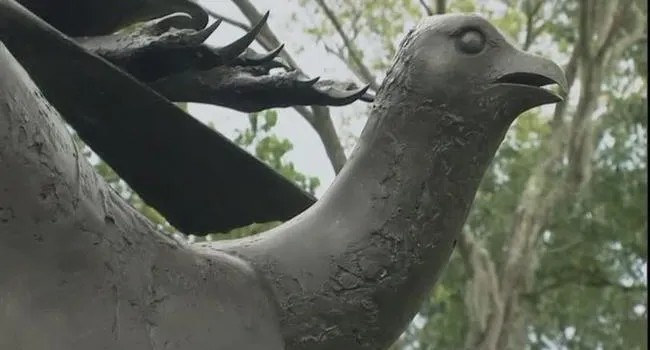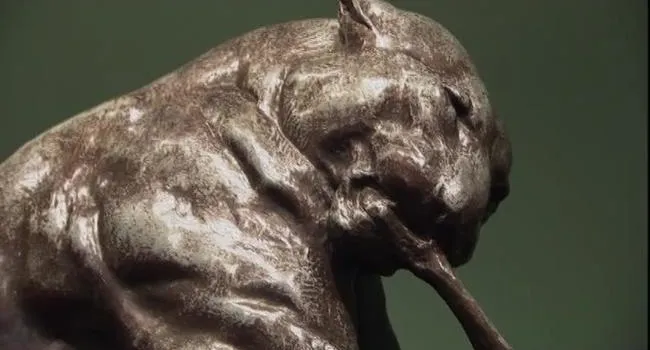The sculpture collection at Brookgreen Gardens include works by many great figurative artists of the time like Paul Manship,Paul Jennewein, and Frederick Remington.
Anna sculpted her own work, modeling in clay and casting. Many of her sculptures were in aluminum. Initially, she cast her work in bronze, but in 1932 she began to use aluminum as a casting material, and she was the first sculptor in America to do so. It was lightweight and also cost less.
In 1951, Anna installed her monumental aluminum sculpture "Fighting Stallions" at Brookgreen's front gate, where it has become the signature image of the gardens.
As Brookgreen grew, the Huntingtons needed someone to oversee the development of the garden itself. The man for the job was a Georgetown native named Frank G. Tarbox Jr. He graduated from Clemson University with a degree in agronomy.
World War II slowed the growth of Brookgreen Gardens. Archer Huntington commissioned Adolph A. Weinman to create "Riders of the Dawn" in 1942. But it wasn't installed until 1946, after the end of the war
In October 1954, Hurricane Hazel struck the Myrtle Beach area. Hazel took years to clean up.
In 1955, Archer Huntington died.
In her eulogy, Anna said of him, "Not a moment of his 85 years was wasted."
In 1959, the South Carolina Forestry Commission asked permission to lease the Brookgreen property east of Highway 17 as a state park.





